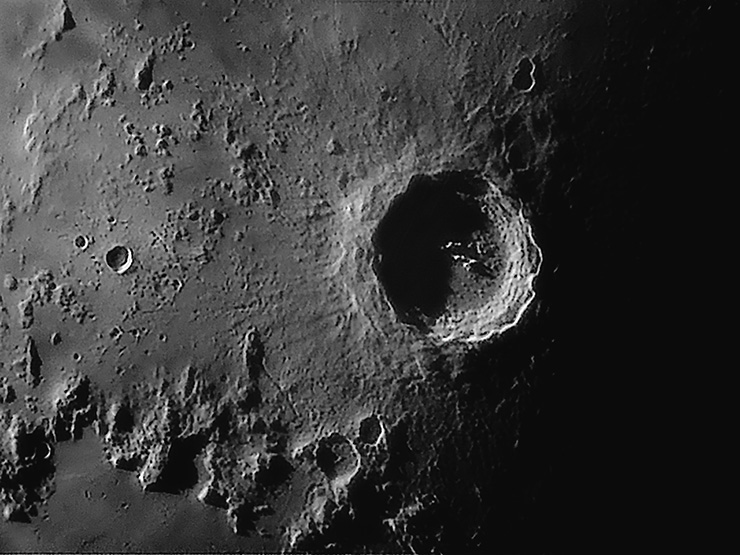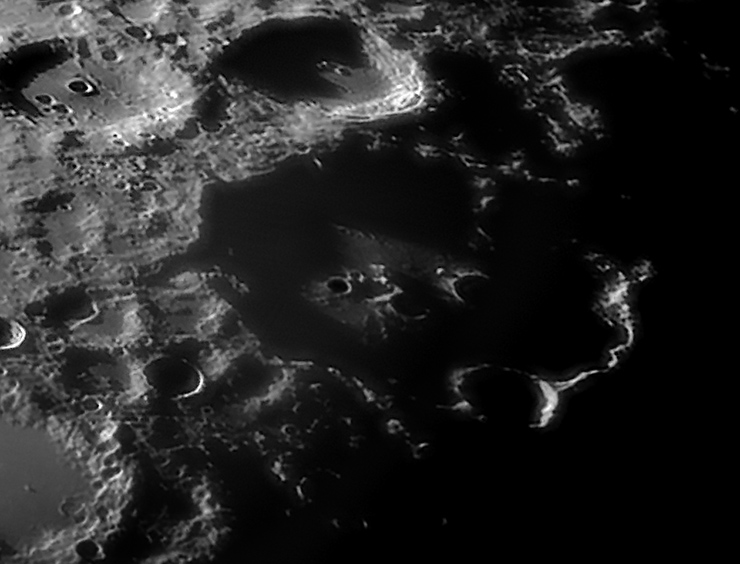Howling at the Moon, 3 :: home :: |
|
9/2/2010: As promised: sunset light on Copernicus and Clavius and evening begins on the Bay of Colors. Clavius is so filled with shadow that only the rims of its enclosed craters are grazed by sunlight. Copernicus is a kind of inverted half Moon in the middle of the Moon. Its central peaks reach up into the last light of the lunar day where their several summits sparkle like a cluster of stars. I was shooting mostly with the single barlow. When I began, the seeing seemed much worse than yesterday but it steadied some over the next hour, and I saw intervals that were comparable to yesterday morning. I dialed in fast exposures and took long runs, 500 frames at a time. Eventually, I opted to try the larger image scale again, and the most successful images were made with an effective focal length of 4.5m. With a 127mm aperture, that works out to F35 which is close to what is said to be optimum for high resolution solar system imaging. The small photosites on the Point Grey Chameleon yield an image scale of 0.17 arc seconds per pixel. That sounds absurd but obviously works very well. Nice to be able to reach such generous sampling frequencies easily with a short-focus refractor; no need to push to F40-something. This morning I moved the FeatherTouch focuser from the solar telescope to the A-P to see if it made a large difference. It made finding focus easier, but I'm not sure I found a better focus. (The Copernicus photo would suggest that I did.) Irritations: my flashlight went out; I forgot to take my reading glasses outside with me (but I did remember my coffee); and I can't experiment with extending the Barlow in lieu of a second amplifier without a simple 2-inch to 1.25-inch adapter which is one of the most common items in any amateur's kit, but I don't seem to have one handy. At least I'm learning to deal with the glare in the stacked Barlow chain. I'll do something about that by and by.
|
:: top ::
© 2010, David Cortner


